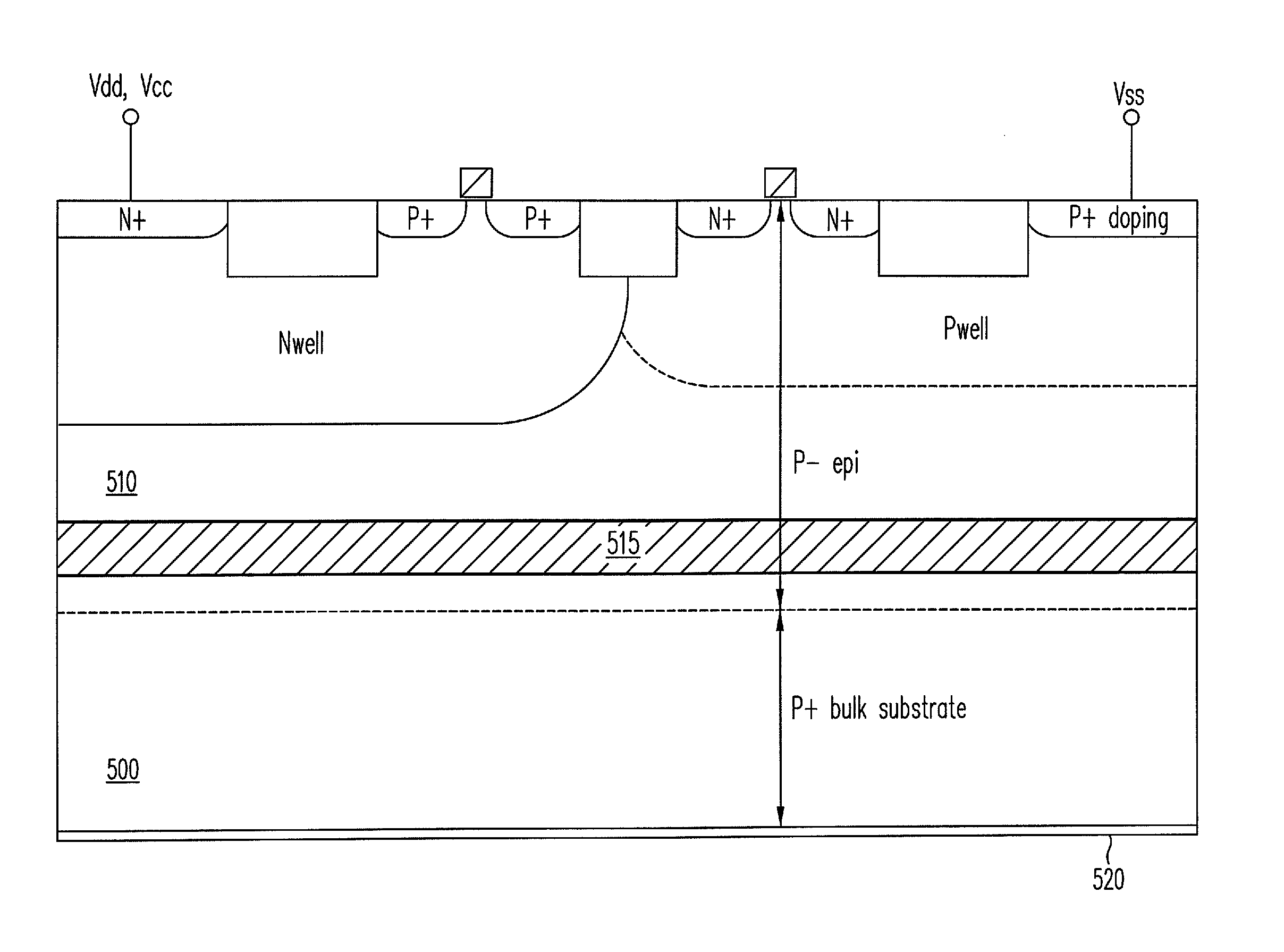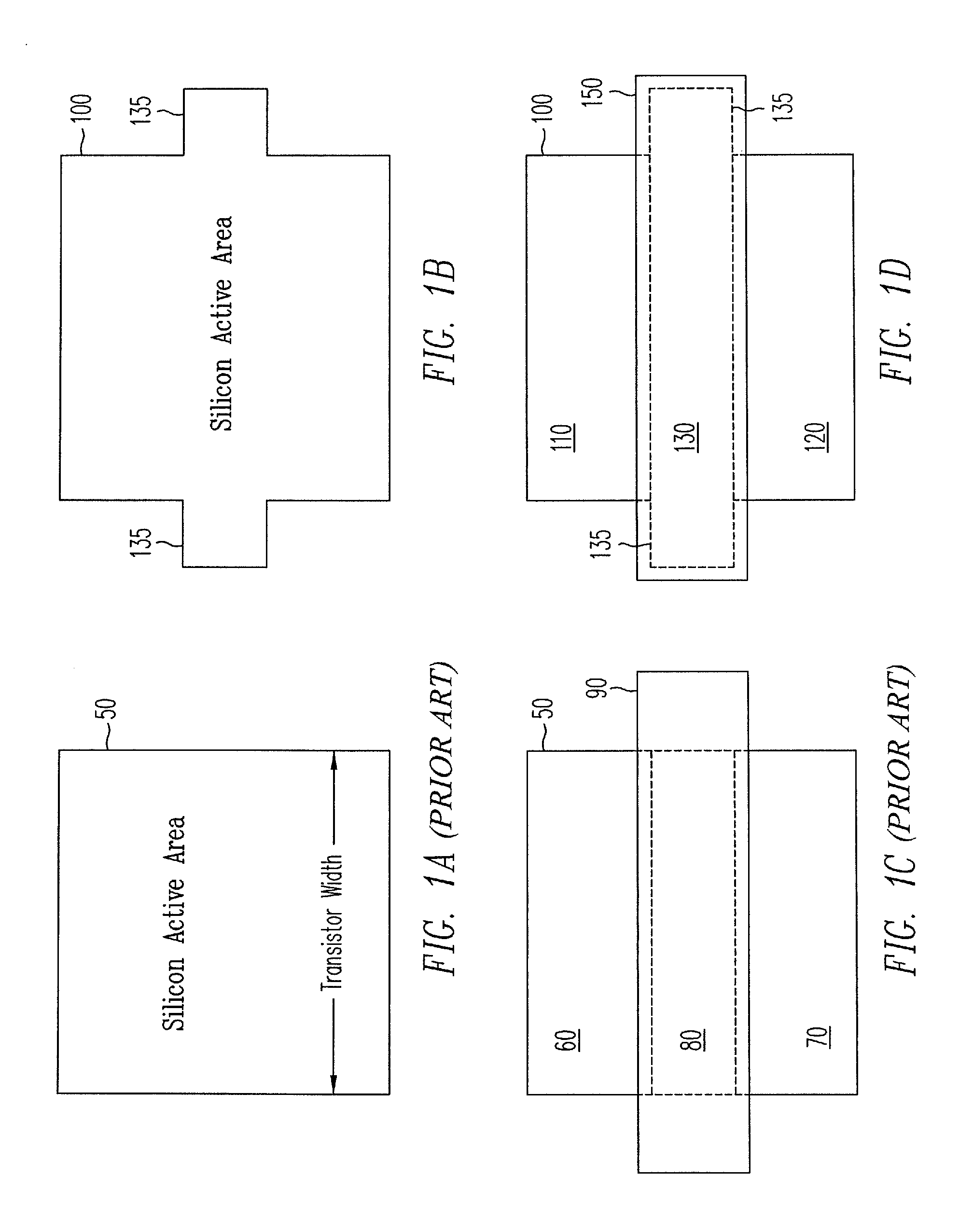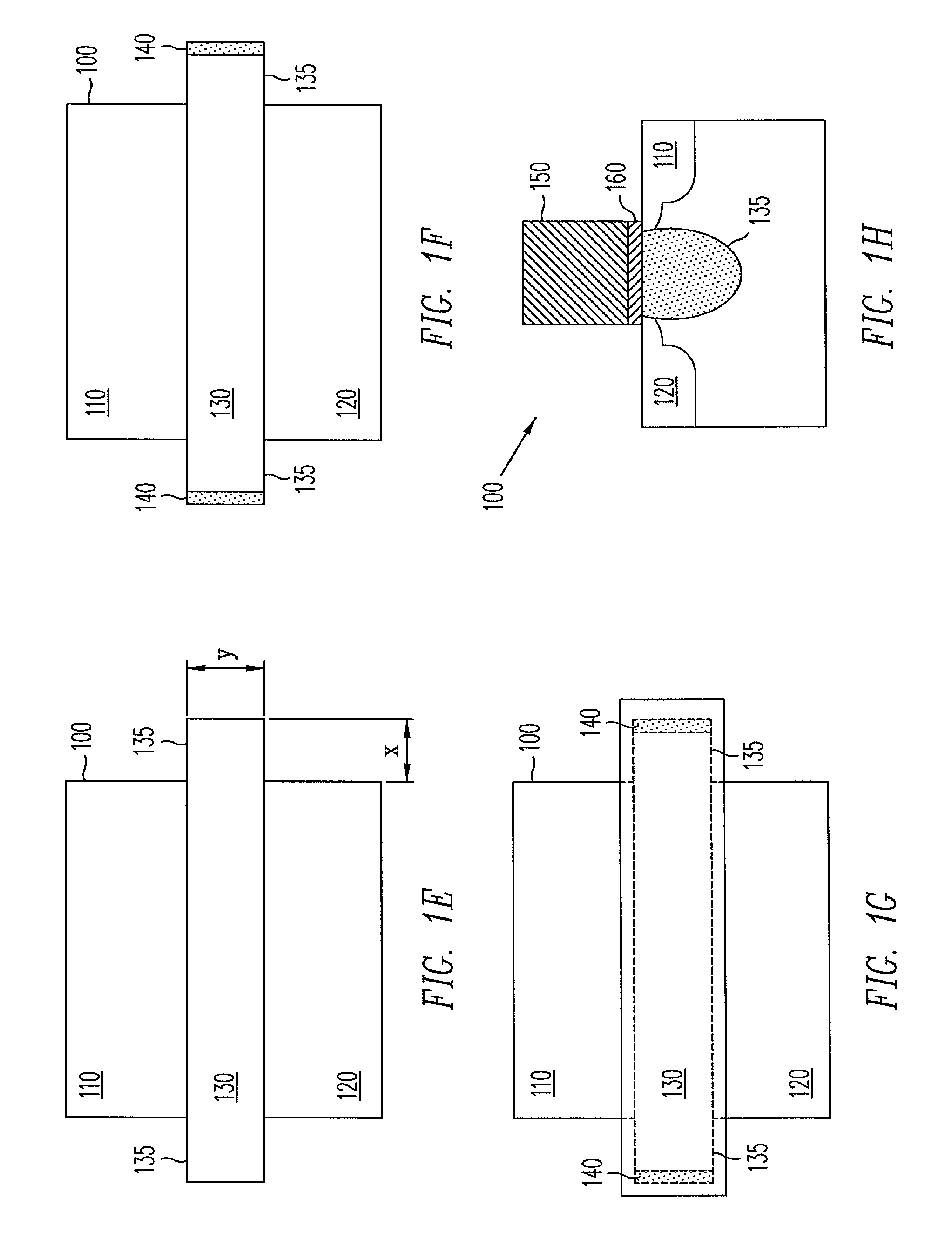Fabrication methods for radiation hardened isolation structures
a technology of isolation structure and radiation hardening, which is applied in the direction of basic electric elements, electrical apparatus, and semiconductor devices, etc., can solve the problems of complete destructive failure of integrated circuits (ics), sporadic device behavior, and electrical degradation, and achieves reduced or eliminated detrimental effects, low cost, and relative simplicity
- Summary
- Abstract
- Description
- Claims
- Application Information
AI Technical Summary
Benefits of technology
Problems solved by technology
Method used
Image
Examples
Embodiment Construction
[0024]The following sets forth a detailed description of at least the best contemplated mode for carrying out the one or more devices and / or processes described herein. The description is intended to be illustrative and should not be taken to be limiting.
[0025]The devices and techniques described in the present application can deliver a complete radiation solution, or in some cases a specialized radiation solution, by directly addressing one or more of the primary degradation radiation effects of ICs: Total Ionizing Dose (TID), Single Event Latch-up (SEL), and Single-Event Upset (SEU). Moreover, the solutions to these degradation mechanisms are accomplished at the silicon process level with modifications to existing foundry baseline process. These unique approaches can be integrated into any CMOS process flow without affecting the performance of the underlying baseline technology. These approaches can further take advantage of a variety of different IC fabrication technologies, such...
PUM
 Login to View More
Login to View More Abstract
Description
Claims
Application Information
 Login to View More
Login to View More - R&D
- Intellectual Property
- Life Sciences
- Materials
- Tech Scout
- Unparalleled Data Quality
- Higher Quality Content
- 60% Fewer Hallucinations
Browse by: Latest US Patents, China's latest patents, Technical Efficacy Thesaurus, Application Domain, Technology Topic, Popular Technical Reports.
© 2025 PatSnap. All rights reserved.Legal|Privacy policy|Modern Slavery Act Transparency Statement|Sitemap|About US| Contact US: help@patsnap.com



